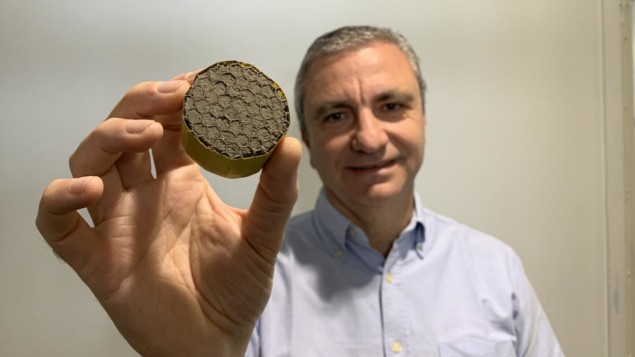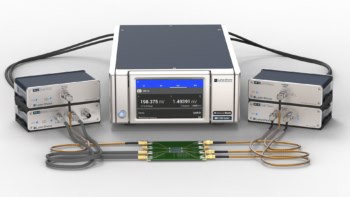
A new meringue-like material that is a strong absorber of sound over a broad range of frequencies has been developed by Michele Meo and colleagues at the University of Bath. They say that their extremely lightweight aerogel is produced using a low-cost, environmentally friendly process that could soon be replicated on an industrial scale. The material promises to be highly effective in reducing the noise of aircraft engines and could also be used in other advanced engineering applications.
As a sound wave passes through porous materials like cellular foams and fibrous polymers, its energy can be strongly dissipated within microscopic pores. As a result, these materials are highly effective sound absorbers at mid-range frequencies – between roughly 800–2000 Hz. To absorb lower frequencies, however, materials must usually be heavier and bulkier, making them impractical for some soundproofing applications.
To create a light-weight material that dissipates lower-frequency sound, Meo’s team used a graphene oxide-polyvinyl alcohol aerogel (GPA). To manufacture this substance, they first produced a foam by whipping up a blend of graphene oxide sheets and PVA polymer using ultra-high shear mixing. After embedding the foam within a honeycomb scaffold, the researchers then freeze-cast it onto a surface, by exposing one side of the material to liquid nitrogen. This caused ice crystals to grow vertically from the side touching the nitrogen, pushing any larger and lighter air bubbles upwards. Finally, the foam was freeze-dried through sublimation, producing a meringue-like aerogel.
Hierarchical and highly tuneable
The resulting material had a hierarchical and highly tuneable porosity and a greatly enhanced ability to dissipate sound energy compared with other porous materials. In addition, the GPA had a density of just 2.1 kg/m3 – making it one of the lightest acoustic materials ever produced. Having adjusted the composition and thickness of their aerogel to optimize its acoustic properties, and evaluated the influence of different processing times, the team created a material with high sound absorption across the 400–2500 Hz range.

Aerogel insulation could provide habitable regions on Mars
Within this range, average losses in sound transmission reached as high as 15.8 dB – which would reduce the roar of a jet engine to the loudness of a hairdryer. As a result, the researchers say that their GPA would be ideally suited for use as an acoustic insulator within jet engine housings – improving comfort for passengers, while adding very little to the weight of the aircraft.
Alongside aerospace applications, the team is also exploring the potential use of their aerogel in vehicles including cars, helicopters, and submarines, as well as in building construction. Indeed, they say that the aerogel could be available for commercial use within just 18 months.
Beyond acoustics, the researchers predict that similar light-weight materials could be created for other applications including fire resistance and electromagnetic shielding.
The new material is described in Scientific Reports.



